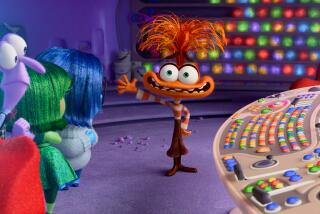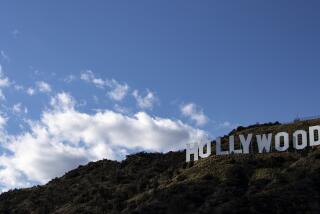Drive-In Theaters Slowly Fade Out of Business
STANTON, Ky. â Projectionist Willie Brewer flipped a switch at the Mountain View Drive-In, sending a stream of film into some humming equipment that quickly shot a powerful beam of light over car roofs to a huge screen.
The Warner Bros. logo that appeared was visible to motorists driving up the Mountain Parkway into eastern Kentucky, where, as in other parts of the country, only a handful of drive-in theaters survive in an era of video rentals and high land values.
âI donât know why people arenât coming now like they did two years ago,â said David Baker, who has owned the theater since 1957. âBusiness is down. VCRs have hurt us more than anything else that has come down the pike.â
Baker frowned. About one-third of his grassy parking spaces were filled--a disappointing turnout for a Saturday night, especially considering that the Mountain View was showing family-oriented first-run films.
Frustrations Shared
Bakerâs frustrations are shared by the owners of other drive-in theaters across the country. The New York-based National Assn. of Theater Owners reports 2,074 drive-in movie screens were in operation last year.
That compares to 3,670 drive-in theaters operating 20 years ago, including hundreds that had two or more screens, and the peak of 4,063 drive-in theaters in 1958, according to the association.
Malcom Green, president of the theater owners group, said several factors have prompted the decline in drive-ins, including suburban real estate development, the faded novelty of automobiles, smaller numbers of traditional families and competition from multiscreen theaters in shopping malls.
âI canât see where thereâs much hope for a turnaround, especially with the high land values,â said Green, who is senior vice president of Hoyts Cinemas Corp., a large East Coast theater chain based in Boston.
Drive-in theaters were highly popular immediately after World War II, Green said, adding that their Golden Age lasted from around 1950 to about 1970, when the industry entered a slow but steady decline.
Most of the outdoor theaters were built before 1960 on plots larger than 12 acres, usually far outside of a city on well-traveled highways, Green said. In the 1960s and â70s, cities expanded and land values increased, but the outdoor theaters only generated money after dark and in good weather.
âDrive-Ins Became Suburbanâ
âDrive-ins became suburban,â Green said. âThe land became valuable. It became too valuable to devote to a seasonal operation.â
Loading the kids into the family car for an outing to the drive-in--or just for an aimless drive--were common evening activities in the 1950s and early 1960s, Green said.
âPeople now are less devoted to driving around in a car,â Green said. âThe idea of just sitting in a car has dwindled.â
Drive-ins, which often show the same films for one to three weeks, also have a tough time competing with indoor theaters with multiple screens that offer several films at the same time, Green said.
Many drive-ins lost their qualifications to show first-run movies in the 1970s and switched to âaction-orientedâ films, frequently with sexual themes, Green said. As a result, parents stopped taking children to drive-ins and a generation has missed the outdoor movie experience, he said.
Offers Reason
Jack Absher, who owns indoor theaters with 15 screens in eastern Kentucky, closed the Prestonsburg Drive-In, the last of three drive-ins he once owned, two years ago. Unlike Green, he sees only one reason for the decline of drive-ins.
âI blame it solely on daylight-saving time,â Absher said.
When daylight-saving time was introduced permanently in the late 1960s, the starting time for summer drive-in movies went from about 8 to around 9 p.m. Many people, Absher said, found they could no longer attend and then get up in time to go to work in the morning.
But in Stanton, children can still watch the movies on blankets next to their parentsâ car. The smell of popcorn continues to fill the night air as shadowy figures make their way to the concession stand amid the sound track echoes from hundreds of window speakers.
And Baker says he plans to hold out until the drive-in movie business booms again or outdoor theaters become so scarce that people will drive long distances to view his big screen.
âPeople will come back,â he predicted. âI think one of these days people will go out looking for a drive-in movie.â
More to Read
The biggest entertainment stories
Get our big stories about Hollywood, film, television, music, arts, culture and more right in your inbox as soon as they publish.
You may occasionally receive promotional content from the Los Angeles Times.










